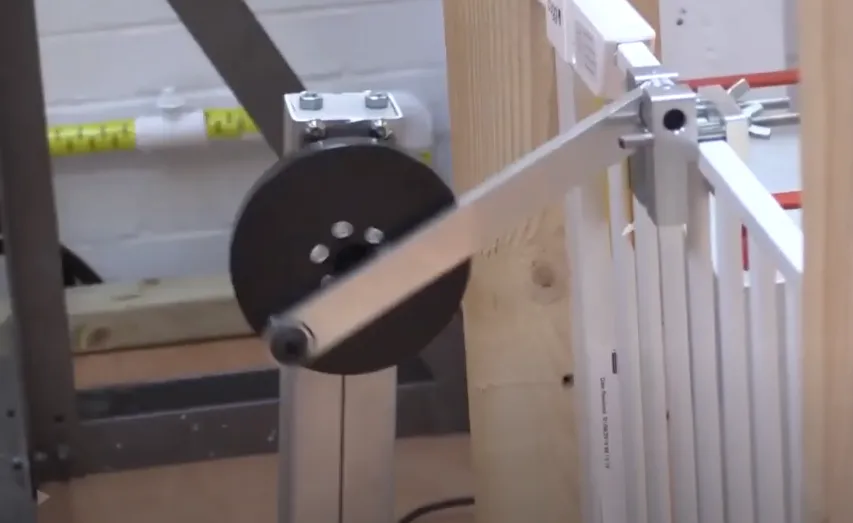DIN EN 12520 Safety Requirements for Domestic Children’s Chairs Testing
The DIN EN 12520 standard specifies safety requirements and test methods applicable to domestic children’s chairs. These chairs are designed for use in private households, typically used by children under the age of three or those who require special support. The standard aims to ensure that such furniture is safe and suitable for its intended purpose, minimizing any risks associated with potential hazards.
The scope of this test encompasses various aspects critical to ensuring safety, including:
- Structural integrity
- Material quality
- Edge and corner sharpness
- Stability during use
- Resistance to collapse under expected loads
- Fire resistance
- Risk of entrapment or suffocation
- Ergonomic design ensuring comfort and safety
The testing process involves several key stages:
- Initial Inspection: Verification of the product's conformity with all specified requirements. This includes checking for compliance with dimensional tolerances, material composition, and structural integrity.
- Loading Tests: Simulation of typical usage conditions to assess stability and resistance under expected loads. This ensures that the chair can withstand normal stress without collapsing or posing a risk of entrapment.
- Fire Resistance Testing: Evaluating the chair's ability to resist fire based on specified criteria, ensuring it does not catch fire easily or contribute significantly to rapid flame spread.
- Ergonomic Assessment: Ensuring that the design is comfortable and safe for children. This includes evaluating the height of the seat, backrest support, and any additional features like armrests or foot rests.
The testing also involves detailed examination of materials used in manufacturing to ensure they meet safety standards set out by DIN EN 12520. Materials must be non-toxic and resistant to wear and tear under normal household conditions. This ensures that children are not exposed to harmful substances or materials that could deteriorate over time.
Quality managers, compliance officers, R&D engineers, and procurement teams often require this testing to ensure their products meet the high safety standards set by DIN EN 12520. The detailed insights provided through these tests help in identifying potential hazards early on, thereby enhancing product quality and consumer trust.
The implementation of DIN EN 12520 ensures that domestic children’s chairs are safe for use in private households. Compliance with this standard demonstrates a commitment to safeguarding the well-being of young users by minimizing risks associated with furniture design and construction.
Applied Standards
The DIN EN 12520 standard is part of a broader framework designed to ensure safety in various aspects of domestic children’s furniture. This includes not only chairs but also other items such as beds, playpens, and high chairs. The standard sets out specific requirements for the design, materials, construction, stability, and durability of these products.
Other relevant standards that complement DIN EN 12520 include:
- DIN EN 71-3: Safety of toys - Part 3: Flammability
- DIN EN ISO 8469-1: Furniture for children - Chairs and high chairs - Part 1: Design requirements
- ASTM F2056-19: Standard Test Method for Determining the Stability of High Chairs Under a Load
- IEC 62196-3: Safety of toys - Part 3: Requirements specific to high chairs and related products
The combination of these standards ensures that domestic children’s furniture meets comprehensive safety criteria. By adhering to multiple international standards, manufacturers can ensure their products are not only safe but also comply with global regulatory requirements.
Benefits
- Enhanced Safety: Ensures that the product is free from any hazards that could cause injury or harm to children.
- Market Compliance: Helps manufacturers meet legal and regulatory requirements, thus avoiding potential penalties and fines.
- Increased Trust: Demonstrates a commitment to quality and safety, which can significantly enhance consumer trust in the brand.
- Better Product Quality: Identifies any design or manufacturing issues early on, allowing for improvements before product release.
- Improved Reputational Value: Positive reviews from satisfied customers and regulatory bodies can improve a company's reputation.
- Reduced Liability Risks: By ensuring compliance with international standards, companies reduce the risk of legal disputes or product recalls.
The testing process under DIN EN 12520 not only ensures that products meet regulatory requirements but also enhances their overall quality and safety. This is particularly important for manufacturers aiming to establish a strong brand reputation in the competitive market of children’s furniture.
Why Choose This Test
- Comprehensive Evaluation: The test covers multiple aspects such as structural integrity, material quality, and ergonomic design, providing a holistic assessment of product safety.
- Regulatory Compliance: Ensures that the product meets all relevant international standards, thereby avoiding potential legal issues.
- Early Identification of Issues: By identifying any potential hazards during the testing process, manufacturers can make necessary improvements before production begins.
- Consumer Trust: Demonstrating a commitment to safety and quality can significantly enhance consumer trust, leading to increased sales and brand loyalty.
- Competitive Advantage: Meeting stringent safety standards positions a product favorably in the market, attracting more discerning customers.
- Cost-Effective: Identifying issues early on through testing reduces the risk of costly recalls or legal disputes later down the line.
The DIN EN 12520 test is an essential part of any manufacturer's quality assurance process. It ensures that products are not only safe but also comply with international standards, thereby providing a competitive edge in the market and enhancing consumer trust.





